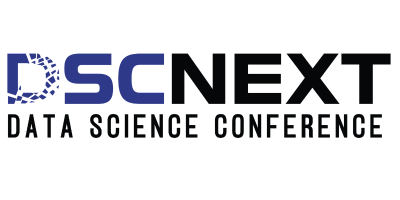Introduction
Exploratory Data Analysis (EDA) is a fundamental step in data analysis, allowing data scientists to uncover patterns, detect anomalies, and validate assumptions before applying statistical models or machine learning techniques. Introduced by John Tukey in the 1970s, EDA remains a cornerstone of data science today.
But how does it work in practice? Think of EDA as a detective’s approach—just like an investigator gathers clues and examines patterns to solve a case, data scientists explore datasets to extract meaningful insights.
What is the purpose of EDA in data science?
Exploratory Data Analysis (EDA) is a crucial phase in the data science process, enabling data scientists to gain a deeper understanding of their dataset. Here’s why EDA is essential:
1. Assessing Data Relevance – EDA helps determine whether the collected data is suitable for the given business problem. If not, adjustments to the dataset or the analytical approach may be required.
2. Identifying and Resolving Data Quality Issues – It helps detect and address common data issues such as duplicates, missing values, incorrect data types, and anomalies.
3. Extracting Key Statistical Insights – EDA reveals fundamental statistical measures such as mean, median, standard deviation, and distribution patterns, offering insights into data characteristics.
4. Detecting Outliers and Anomalies – Unusual values can distort analysis and predictions. EDA identifies these outliers, allowing data scientists to assess whether they should be corrected or removed.
5. Understanding Relationships Between Variables – By analyzing patterns and correlations between features, EDA helps uncover meaningful connections that inform predictive modeling and decision-making.
6. Feature Selection and Engineering – EDA assists in identifying the most relevant features for analysis while eliminating irrelevant or redundant variables. It also helps create new variables that enhance model performance.
7. Guiding Modeling Approaches – By understanding the dataset’s characteristics, EDA helps select the most appropriate machine learning or statistical modeling techniques.
Understanding EDA Through a Real-World Analogy
Imagine you’re a detective investigating a case—but instead of solving crimes, you’re uncovering hidden trends in data. Your job is to collect information, clean up inconsistencies, analyze relationships, and form logical conclusions.
Let’s break this down step by step.
Key Steps in EDA
Step 1: Data Collection – Gathering Clues
A detective starts by gathering evidence from multiple sources. Similarly, data scientists collect datasets from:
Databases
APIs
Spreadsheets
Example: A real estate agency gathers house price data, including location, square footage, and number of bedrooms.
Step 2: Data Cleaning – Verifying the Evidence
Raw data often contains errors, missing values, or duplicates. Cleaning the data ensures its accuracy before analysis.
Common Cleaning Techniques:
Removing duplicate entries
Handling missing values (filling with median, mean, or dropping them)
Standardizing data formats
Example: If some houses are missing price details, the missing values can be filled using median prices to avoid skewing results.
Step 3: Data Exploration – Identifying Patterns and Trends
Detectives examine patterns in evidence, and data scientists do the same using summary statistics and visualizations.
Statistical Techniques
Mean, Median, Mode – Central tendencies of numerical data
Variance & Standard Deviation – Measures of data spread
Skewness & Kurtosis – Identifies data distribution shape
Visualization Techniques
Histograms – Show the distribution of house prices
Scatter Plots – Reveal relationships between variables
Box Plots – Detect outliers in data
Example: A scatter plot might show that houses with larger square footage generally have higher prices, confirming a positive correlation.
Step 4: Correlation Analysis – Connecting the Dots
Just as detectives link suspects and motives, data scientists analyze how different variables interact.
Heatmaps & Correlation Coefficients
Heatmaps visually represent relationships between variables.
Correlation coefficients measure how strongly features influence the target variable.
Example: A heatmap might show that location has a greater impact on house prices than the number of bedrooms.
Step 5: Drawing Initial Conclusions – Building Insights
Before presenting findings, detectives summarize their case. Similarly, in EDA, insights help refine models and guide decision-making.
Key Takeaways from EDA
Just as a detective cross-checks evidence, filters out misleading clues, and uncovers key connections, EDA helps refine data, resolve inconsistencies, and highlight crucial variables before modeling.
Identifying Key Influencers – Determines which variables have the most impact on the target outcome.
Ensuring Data Quality – Detects and addresses missing or incorrect values.
Handling Outliers – Identifies and manages outliers that could distort analysis.
Understanding Feature Relationships – Analyzes correlations between variables, aiding feature selection for predictive models.
Example: A real estate agency might discover that houses near schools and parks sell faster, leading to better pricing and marketing strategies.
Applications of EDA
EDA is widely used across industries:
Finance: Fraud detection, stock market analysis.
Healthcare: Patient risk assessment, disease prediction.
Marketing: Customer segmentation, trend analysis.
Conclusion
EDA is a critical first step in data analysis, ensuring data quality, uncovering insights, and informing modeling decisions. By systematically exploring data, analysts can avoid errors, improve accuracy, and drive better business strategies. Just as a detective thoroughly investigates before drawing conclusions, a data scientist must explore and refine data before making predictions.
Looking ahead, DSCNext 2025 will showcase cutting-edge advancements in data science, including AI-driven EDA techniques, automated data profiling, and real-time anomaly detection. This event will bring together experts, researchers, and industry leaders to discuss the evolving role of data exploration in shaping the future of analytics and decision-making.
Reference

